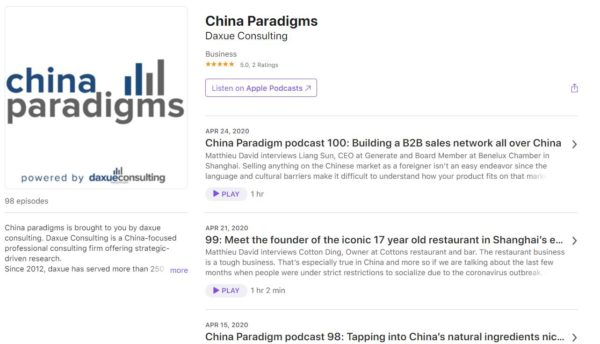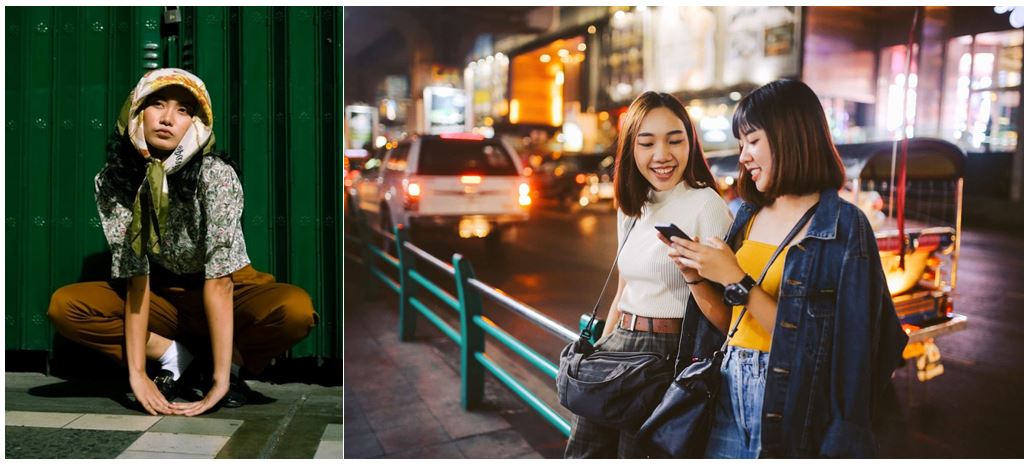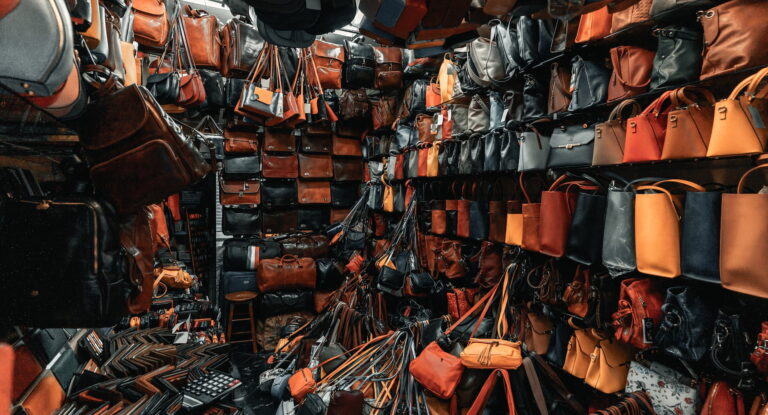As the structure of mass consumption has undergone major changes in China, modern Chinese fashion is following new trends. Nowadays, “displaying power, connecting industries, and promoting ecology” has become the mission of many Chinese fashion brands. With the deepening of international fashion exchanges and cooperation, Chinese traditional elements and oriental aesthetics have received great attention.
With the rapid development of Chinese economy, the new generation of Chinese designers obtained the opportunity to study at professional art and Design Colleges. A large number of new designers who have returned from their studies have started their entrepreneurial path. More bold and innovative independent designer brands are springing up.
Tmall predicts trends in modern Chinese fashion
The Tmall Trend Center makes predictions for future trends, and gives designers the insights they need to meet the demands of Chinese consumers. For example, in 2020 Alice in Wonderland-themed shirts and poetic ruffle dresses are key pieces inspired by Tmall’s predictions. They have been very popular among brand ambassadors and KOLs.
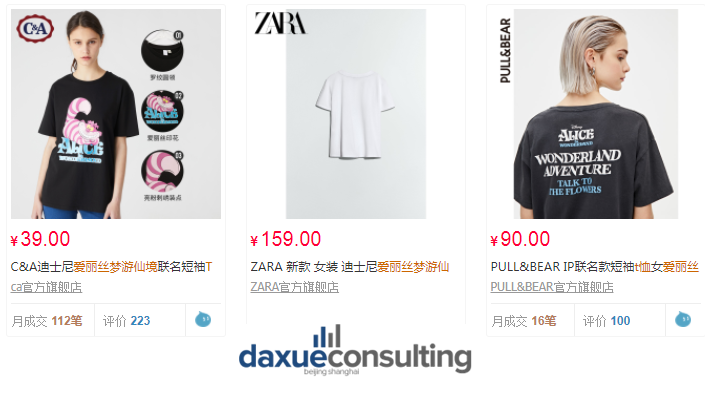
Source: Tmall, Alice in Wonderland-themed t-shirts
Additionally, Tmall said that “poetry,” “tech forward,” “heritage” and “impact” would be the top themes in China’s fashion world. Brands as Song Ta, i-am-chen and Peacebird and Eifini incorporated insights from this report when designing their collections.
Poetry
In China, women in the workplace are no longer afraid to show off their feminine and romantic side. This translates to a fairytale-like and poetic aesthetic that is trending among young women. Keyword searches such as “Instagram vacation style” and “fairytale dress” have been trending on the Chinese internet. Clothes in the poetry style balance soft feminine silhouettes with minimalist cuts, dreamy layers and princessy ruffles.

Source: Alizia, Poetry theme the modern Chinese fashion
Tech Forward
Young people in China are increasingly interested in exploring how technology can shape their future. As an example, climate change and futuristic films are top of mind for consumers. It has given rise to the future-tech trend. Designers use various industrial-inspired materials, such as metal, reflective cloth and glass, to bring this theme to life through fashion. We are living in the future, and Chinese fashionistas are dressing the part.
Heritage
While globalization has made the world smaller, some consumers use their unique cultural heritage as a form of self-expression. “China Cool” is one such trend that uses cultural elements in fashion design. It evolves from simple icons such as dragon to popular Chinese candy, ancient poems and even Chinese philosophy. One result of China’s return to its traditional heritage, is more pride in ‘made-in-China’ designs, and the formation of “China-chic”
The rise of ”China chic” design
The term “China-Chic” characterizes the rise of China’s native fashion trends. It has expanded the concept of “Made in China,” which is usually about the quality of products.
According to AliResearch, in 2018 people have searched ‘China-chic’ related keywords over 12.6 billion times on Alibaba’s online shopping platforms. The following seven months of 2019 saw the boom of the “China-Chic” economy. Moreover, the number continued to surge by over 393 percent. The top 10 most searched keywords have included tea, Chinese style, retro styles, the Forbidden City and Beijing Opera, said the report that analyzed the database provided by Alibaba.
Shifting from imported pop culture
The initial adoption of the term “China-Chic” represents a unique fashion trend mainly defined by the country’s differentiating cultural elements. Designers in the fashion industry were the first to feature traditional Chinese patterns and characters. The eye-catching styles created a visual feast that many have never seen before, turning the collections into best sellers.
Under such influence, young people gradually shifted their attention from pop culture imported from Japan, Korea and the West. Now they develop interest in traditional Chinese style. Many of them have learnt to dress themselves up in traditional garments, complete with accessories and hairstyle.
A report by global data analytics company Nielsen on China’s Consumer Trend Index of the year 2019 further revealed that not only young people, but also more and more Chinese consumers in general are choosing domestic products over international ones after they evaluate cost performance but also with a stronger cultural confidence.

Data Source: Nielsen report 2019, designed by daxue consulting, Chinese consumers prefer domestic brands
Hanfu is making comeback to modern Chinese fashion
Hanfu is a form of traditional Chinese dress in the midst of a revival. Wendy Yu, Chinese fashion expert said: “Today’s youth are exploring Hanfu stylistically. I interpret it as a sign of expression and cultural confidence rather than a nod to ideology.”
The Hanfu is a traditional Chinese robe cut from silk with a self-tie waist belt. It’s often decorated with painterly floral and dragon designs in red and green. Beautifully ornate, it appeared during the Han Dynasty, which was China’s ‘golden era’.

Source: Aliexpress, The Hanfu dress is making a come-back in modern Chinese fashion
Since 2001, Hanfu has been making a comeback, gaining global recognition largely due to the rise of the internet. It enabled Hanfu revivalists to connect with one another via discussion boards like Hanwang, or the Han Network. People shared pictures, sketches and tips on how to make the clothing.

Data Source: iimedia, number of Taobao merchants of Hanfu clothing
A recent report of Sohu stated that nine out of ten of today’s Hanfu wearers are female, with an average age of 21.
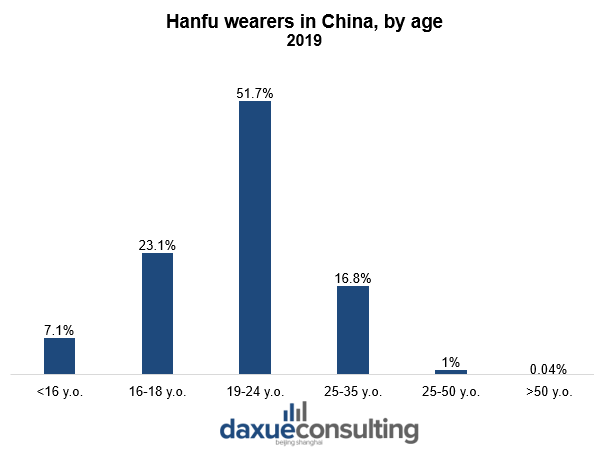
Data Source: Hanfu Industry report, Hanfu wearers in China by age
Fashion’s cyclical nature means the resurgence of trends is always on the horizon. However, there’s cultural depth to the revival of China’s Hanfu. Even influential designers including Christian Dior and Yves Saint Laurent have drawn from traditional Chinese dress to inspire past collections.

Source: Wallpaper, Dior China 2019 collection
Chinese fashion brands: from traditional clothing companies to independent designers
Each year, more and more Chinese brands attend the global fashion week. In fact, there are nearly 90 Chinese brands that participated in the four major international fashion weeks in 2018.
The development of the Internet has also brought convenience to online shopping. Chinese brands are constantly launching campaigns on foreign online malls to seize overseas markets. Besides, local fashion weeks, offline buyer stores are constantly giving new designers a greater platform. Compared with the predecessors, the cross-border cooperation of the new designers is bolder and avant-garde. There are also many young independent designers such as Liu Qingyang, Susan Fang, Shangguanzhe, Xander Zhou, Wang FENGCHEN, Ms. MIN, etc., who have gained the favor of many loyal fans at home and abroad.
Modern Chinese fashion brands with eco-friendly values: attracting Chinese millennials
A wave of eco-friendly, direct-to-consumer brands that represent international millennials in global capitals is now hitting urban China in response to the up-tick in green consumer demand. The “Woke” message these brands share: it is fashionable to care for the planet and one’s well-being. There is a special thrill that comes from appearing as someone informed and aligned with the global elite’s values. It is belonging to this global class that makes these contemporary brands irreplaceable.
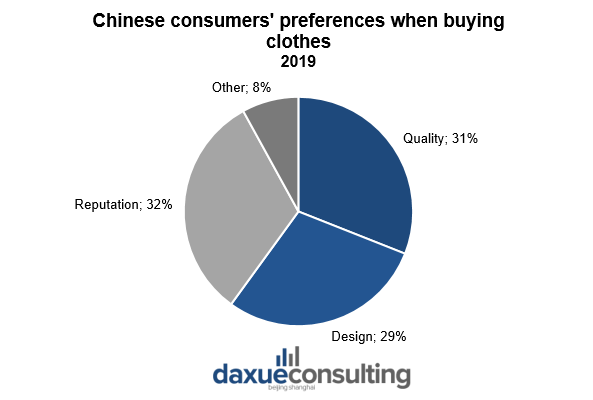
Data Source: Nielsen report 2019, Chinese consumers’ preferences when buying clothes
Fake Natoo: an example of a modern “green” Chinese brand
Fake Natoo is differentiating itself from competitors with its production techniques. The company’s clothing is made exclusively from up-cycled materials. Fake Natoo creates the clothing using discarded clothes or donated textiles, making this a truly sustainable line. In addition, Fake Natoo creates employment opportunities for migrant women by employing them to create designs and donating 10% of all revenue to migrant women’s cooperatives. “Reclothing Bank” was brand’s response to China’s rapid development. “Reclothing” stands for the re-making and re-designing of secondhand clothes. “Bank” signifies a platform for the circulation of old materials. Nowadays, those who stand behind the emerging eco-friendly modern Chinese fashion attract millennials and gen Z in China.

Source: Fake Natoo, Reclothing bank collection
Streetwear brands in China are booming
China recently entered a new maturation phase in which niche and streetwear brands are increasingly attracting cult followings. Currently streetwear brands in China are hitting both high streets and Weibo feeds. Mimicking KOLs in China, people have found in anti-establishment streetwear an unprecedented form of expression. China’s largest e-commerce platform Taobao, noticed that female clients are more enticed by neutral, masculine fashion pieces. On the other hand, male clients are increasingly moving towards gender-fluid items.
According to Hypebeast and PwC Asian respondents spending five times more on streetwear per month than on non-streetwear. For Tmall, streetwear growth was 60 percent higher than the average growth for other clothing categories. The Chinese e-tailer found that sneakers and hoodies were the most sought-after streetwear items.
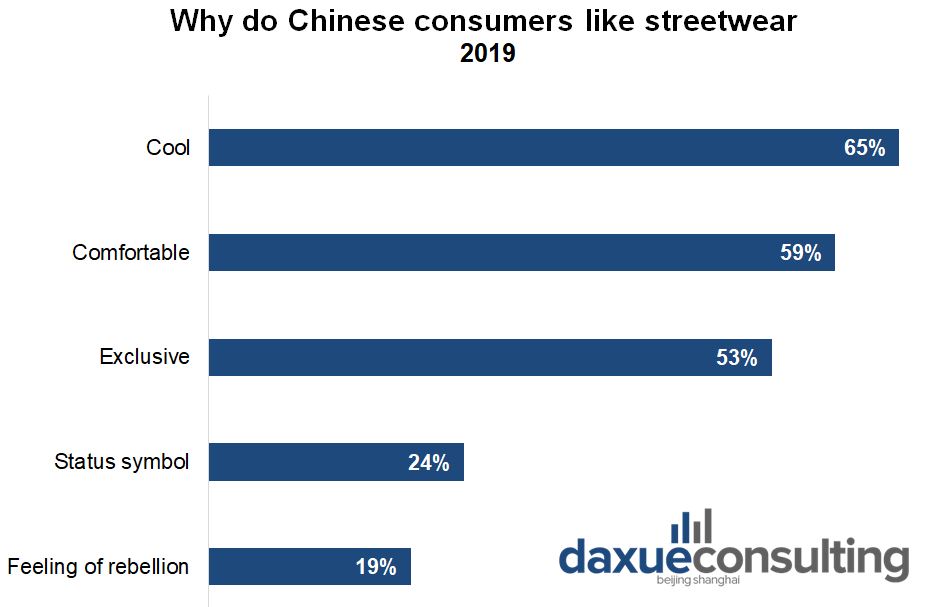
Data Source: Hypebeast, Why do Chinese consumers like streetwear
Chinese rap has long been underground, defying authority and censorship. Television talent shows have taken China by storm, pushing the cultural boundaries between hip-hop and fashion. Youku, a video hosting service in China, broadcasted critically acclaimed competition show “Street Dance of China”. This show promotes the combination of hip-hop culture and streetwear.

Data Source: Hypebeast, Which figures Chinese consumers consider the most credible in streetwear
Sankuanz fashion brand: part of the rising Chinese hip hop wave
Sankuanz is one of the independent Chinese labels. It was shortlisted for the LVMH Prize in 2015 alongside the likes of Vetements, Jacquemus and Craig Green. Its’ Xiamen-based founder and designer Shangguan Zhe’s has a knack for on the pulse, period-defining collections. The eccentric, art school approach Sankuanz was born with in 2013 evolved into languid tailoring as fashion ousted the traditional suit and tie, and now its techwear-inspired. Brand is a part of the rising Chinese hip hop wave, collaborating with rappers DoughBoy and Bridge.

Source: mixmag, Sankuanz collection
What does the future bring for Chinese fashion?
Due to the coronavirus outbreak in China, major apparel export markets had to shut down. Consumer demand has fallen sharply internationally. This has led to increase in the cancellation or delay of orders by European and American clients since mid-March. Apparel export orders and the number of new orders dropped significantly, leading to an unprecedented impact on Chinese exporters. According to the statistics by China’s customs office, from January to May 2020, exports of clothing and accessories totaled 38.21 billion US dollars, down 22.8 percent year-on-year.
In the era of the Internet, consumers are playing a more active role in consumption. They don’t only pursue more diversification and personalization, but also have higher demands for the flexibility. Besides, the reality dictates new demands for fashion. For example, more and more brands produce customized face masks. Moreover, people are more concerned about environmental issues and the demand for sustainable fashion is growing.
Male beauty is another rising fashion trend in China, learn more from our report
Listen to over 100 China entrepreneur stories on China Paradigms, the China business podcast
Listen to China Paradigm on Apple Podcast
